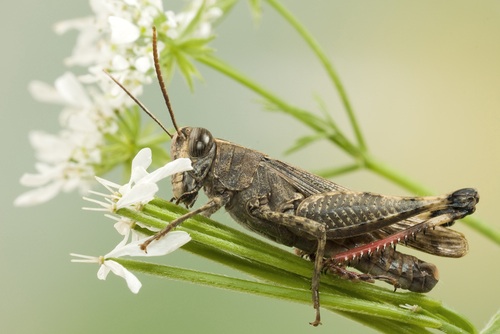
Officials throughout the West are claiming that grasshoppers will likely hatch in bigger numbers than any year since 1985 — a year that saw “hundreds of millions of dollars in damage when [the grasshoppers] devoured corn, barley, alfalfa, beets — even fence posts and the paint off the sides of barns.”
The article in the Wall Street Journal cites a federal survey of 17 states taken last fall that found dangerously high numbers of adult grasshoppers in farming states throughout the West. Taking into account the fact that the female grasshopper lays hundreds of eggs — the spawning of these insects could be catastrophic.
A rancher near Buffalo, Wyo., Mr. Fieldgrove was enjoying a banner year last summer when, seemingly out of nowhere, crawling carpets of hoppers marched onto his rangeland — a harbinger of this year’s infestation. In three weeks, they had eaten every blade of tender, nutritious grass on his 10,000 acres. They also ate his wife’s lilac bushes. “They took it all,” Mr. Fieldgrove said.
Unable to find enough grass, Mr. Fieldgrove’s 200 young calves began to lose weight. He ended up selling them at auction several weeks earlier — and 60 pounds per calf lighter — than planned. And he had to import hay to feed the mother cows he kept on his ranch for the winter.
The grasshoppers cost Mr. Fieldgrove about $30,000 in profit, he said — and local agricultural officials are warning him it could be worse this year.
Wyoming is one state that refuses to lay in wait for the pesky critters. The cowboy state has allocated $2.7 million towards suppression efforts, including aerial spraying of pesticides. But if Wyoming, along with other western states such as Idaho, Montana, Nebraska and South Dakota, do not receive additional funding for grasshopper suppression, results could be disastrous.
 2010 may, unfortunately, become the year of the grasshopper, just as 2005 was the year of the locust. In that year, locusts devastated farms and agricultural businesses from western Africa to eastern Australia, a topic Risk Management covered with an in-depth feature.
2010 may, unfortunately, become the year of the grasshopper, just as 2005 was the year of the locust. In that year, locusts devastated farms and agricultural businesses from western Africa to eastern Australia, a topic Risk Management covered with an in-depth feature.
We’ll be keeping an eye on this potential agricultural catastrophe — check back for updates.

great post, thanks for sharing